Jerusalem artichoke recipe. This recipe is perfect for lunch, light dinner, or a side dish.
The Jerusalem artichoke has no relationship to Jerusalem, and it is not a type of artichoke, though the two are distantly related as members of the daisy family 🌼 and my family 😁
The Jerusalem artichoke (also called sunroot, sunchoke, wild sunflower, topinambur, or earth apple) can be used in dishes instead of potatoes or served on its own. The taste of this root is delicate and refreshing and reminiscent of actual artichoke.
Jerusalem artichoke can be eaten raw, but it tends to produce a lot of wind (gas 💨) in the human body. That is one of the reasons why it is better to cook them beforehand. Cooking will reduce grass-causing components, making a pleasurable after-meal experience. To assist digestion even further I’m using CCF spice mix and I would highly recommend this digestive spice mix after a meal.
Light and nourishing lunch – Jerusalem artichoke, asparagus, and bell peppers sautéed with CCF and BSSM (Basic savory sattvic spice mix) and fresh thyme.
Sweet and crunchy when raw, smooth and aromatic when cooked, these knobbly tubers are on my fall and winter shopping list. 🛒

Here are some reasons to fall in love 🥰 with Jerusalem artichokes:
The taste. They taste so great! 😋 and can be used as a delicate and refreshing, potato substitute.
They are great probiotics. High levels of inulin bypass digestion and reach the lower gut to feed the good bacteria that reside there. Supports regular bowel movements. 🤓
They are high in potassium. Increasing your dietary potassium is especially beneficial for people at risk for high blood pressure. 🤓
Aphrodisiac.
Supportive for lung health and liver function.
Jerusalem artichoke is high in protein. Not only does this wonderful root contain more protein than most other root vegetables, it’s particularly high in sulfur-containing essential amino acids. These sulfur-containing amino acids are essential for maintaining the flexibility 🤸🏻of connective tissue as well as allowing the liver to carry out detoxification. 🧹🧽🧼
They can decrease cholesterol levels. 💃🏼🕺🏼💃🏼
One cup of Jerusalem artichoke provides a quarter of your daily iron! 😲 A deficiency of iron limits the delivery of oxygen to the cells resulting in fatigue and decreased immunity. (By now, everyone knows how important immunity is. 😉😉)
Ok, guys, you got the idea. Jerusalem artichoke is amazing. 🤩 It is in season now. 🥳 I love it, and I’m just trying to convince you to give it a try if you haven’t tried it yet. It is so easy to cook, you can eat it raw if you want to.🙏🏻💞🌺🌺🌺
And here are the spice mixes I recommend for this recipe 👇🏻👇🏻👇🏻 They are must-have staples in my kitchen.
And here is the recipe 🤗 Enjoy 💞
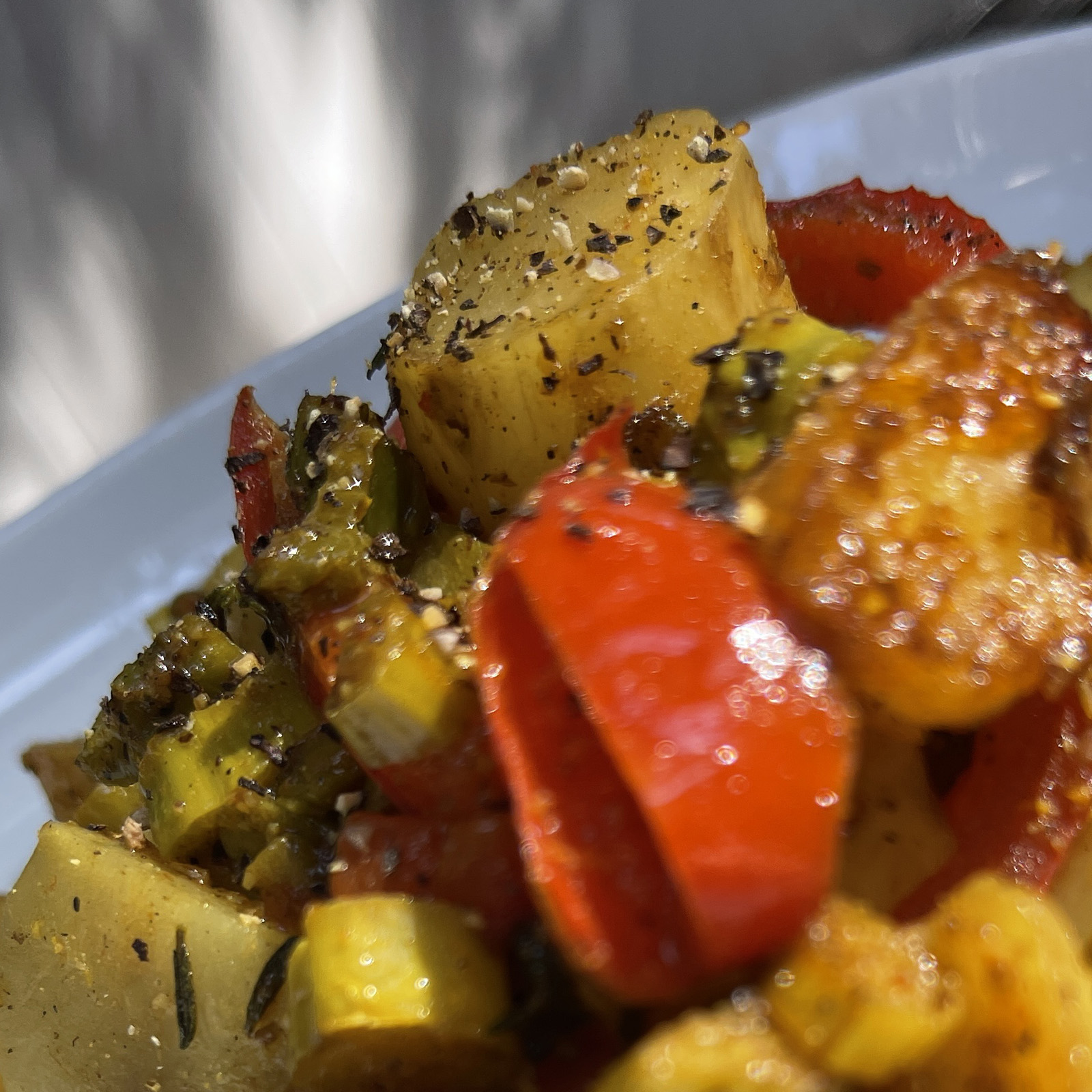
- 2 cups Jerusalem artichoke (scrubbed, chopped)
- 2 cups asparagus (1 bunch, chopped)
- 1 red bell pepper (thinly sliced)
spices and seasonings
- 1 tbsp ghee (or coconut oil)
- 1 tsp ginger (fresh, grated)
- 1 tsp thyme (fresh leaves)
- 1 tsp rosemary leaves (fresh, finely chopped)
- 1 tsp Basic Savory Sattvic spice mix (BSSM)
- 1 tsp Himalayan salt
- 1 tsp CCF spice mix
Prep
- Scrub Jerusalem artichoke with a vegetable brush and chop into bite-size pieces. Thinly slice the bell pepper.Trim fibrous asparagus stalk ends and discard. Cut the asparagus spears into 2-inch pieces. Peel and grate the ginger. Finely chop rosemary leaves. Remove thyme leaves from the stems.*
Jerusalem artichoke sautee
- Warm-up ghee (or coconut oil) in a pan and add grated ginger, thyme, rosemary. Mix well. Add Jerusalem artichoke, bell pepper, CCF spice mix, and salt to the pan, cook under the lid on medium-low for about 10 min.
- Add asparagus and Basic Savory Sattvic spice mix to the same pan, mix well, continue cooking for 5 more min.
- Serve right away. This dish makes lovely lunch, light dinner, or can be served as a side dish.
What about you?
Did you try this recipe?
Let me know how it went in the comments below and share a picture of your sunchoke dish on Instagram with the hashtag #positivepranic @positivepranic so that I can see your beautiful creation 🙂 🙏 We have a Positive Pranic Facebook group as well, where you can share your photos and experiences.
Be Alive🌱,
❤ Love, Julia
Don’t forget the spices 😉



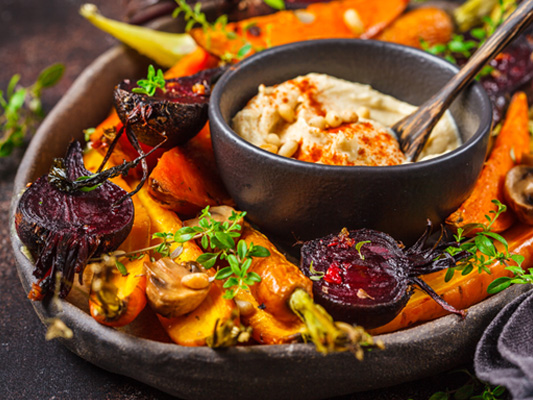







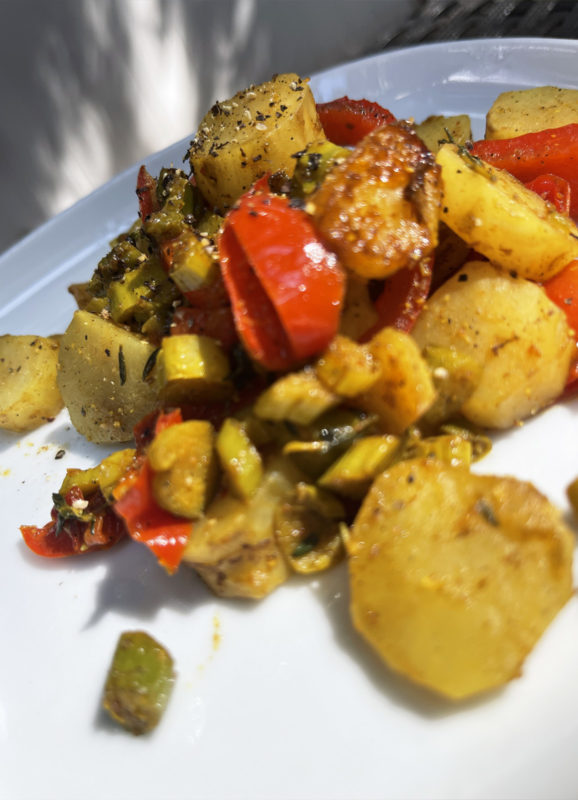

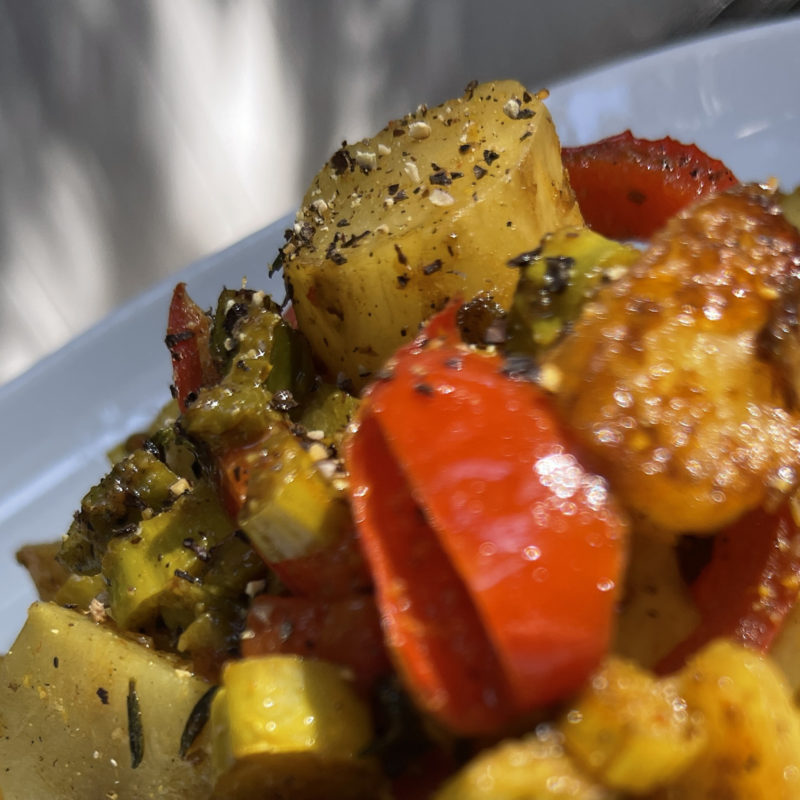
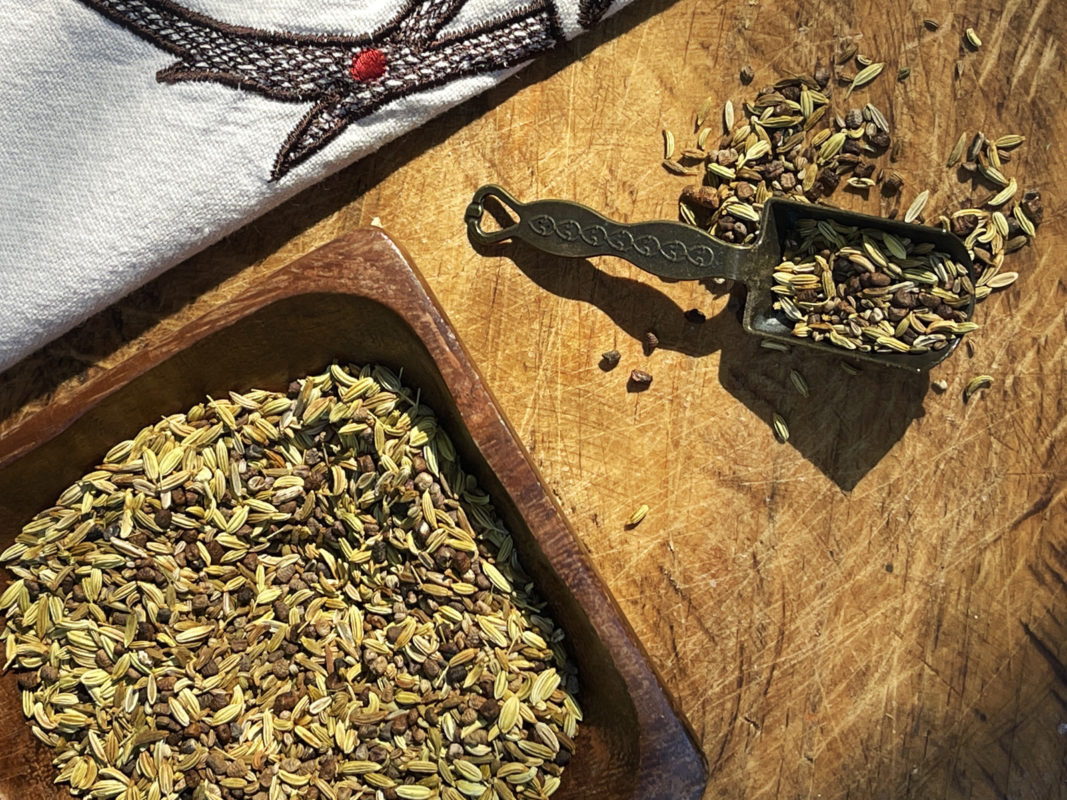
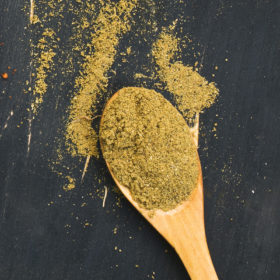
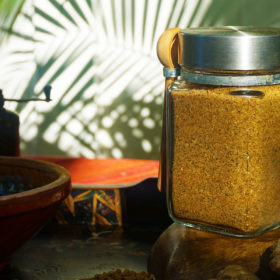
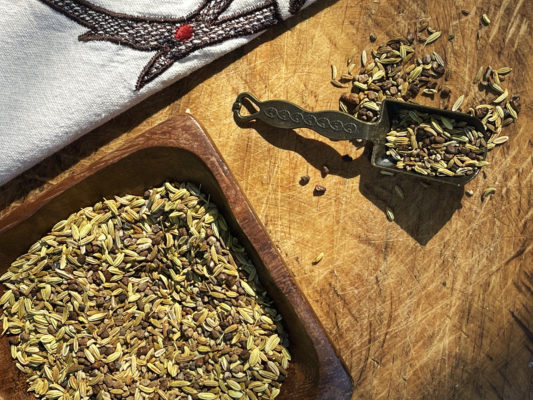
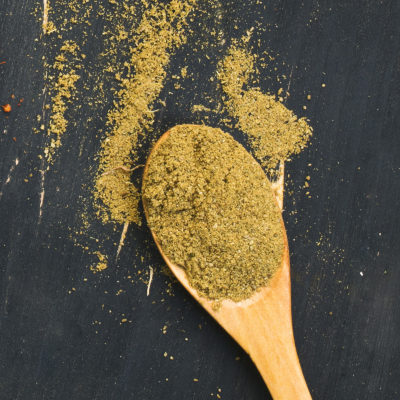
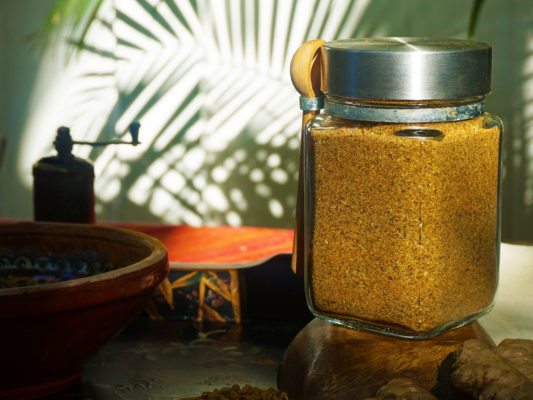



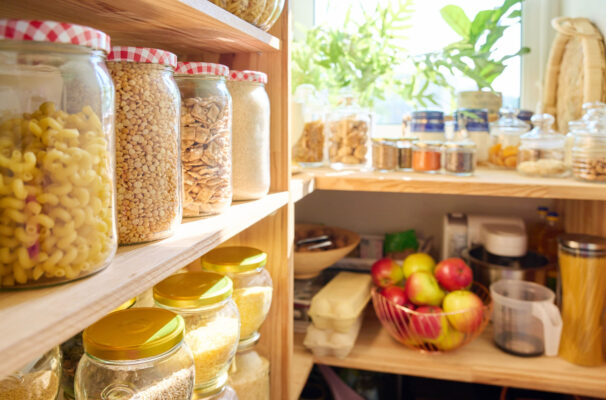
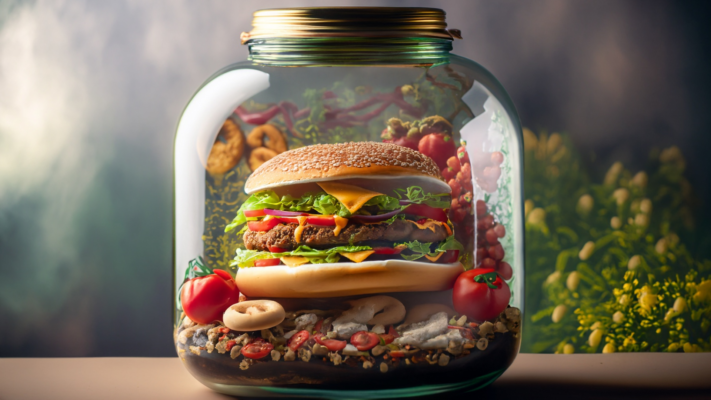


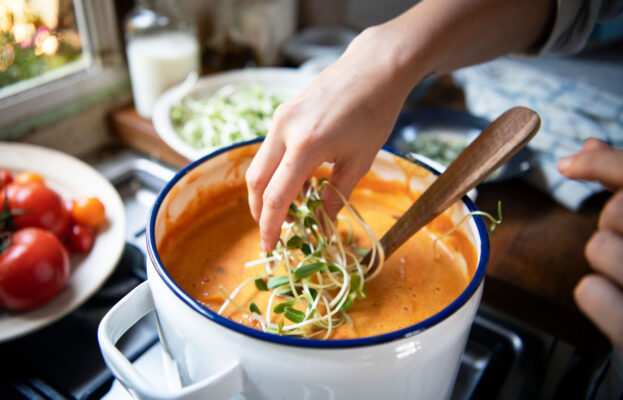
I haven’t tried this recipe, but I grow three varieties of ‘chokes. One is a white/tan skinned very knobby tuber that has a great slightly potatoey and Sunflower seed/nutty flavor. They’re great raw, steamed, boiled, fried, roasted, any old way! The next is a smoother red skinned variety that has a more potatoey flavor, not quite as good as the others. They have a lot more Inulin starch which is what causes the gas -issue-! The third type is a carrot sized and shaped tuber that has an obnoxiously strong turnipy/herbal flavor. Not good at all. One tuber chunked into a whole pot of soup or stew is more than enough to give it a strong flavor.
There are four ways to deal with the gas -issue-! They can be cooked slowly for hours, cooked with an acidic ingredient such as vinegar or citric acid, well frozen and when thawed they’re still good raw or cooked any which way. The fourth way is to ferment them just like sauerkraut or in a Kimchi or refrigerator pickles. This converts the Inulin into Fructose and gets rid of the gas and makes them sweeter, like turnips and parsnips and some other root veggies after a good winter’s freeze.
We can most of ours as pickles. The vinegar mix makes them safe for us and visitors and I like them better than cukes.
Thank you so much, Blaine, for sharing this valuable information and your experience. It is all very helpful. I used the first type of ‘chokes you described (small knobby tubers).
The spices I’m using are very supportive of digestion. I would highly recommend CCF spice mix during cooking and digestive spice mix after a meal.
I find these spice mixes very effective, and they are quick to make. I hope you give them a try.